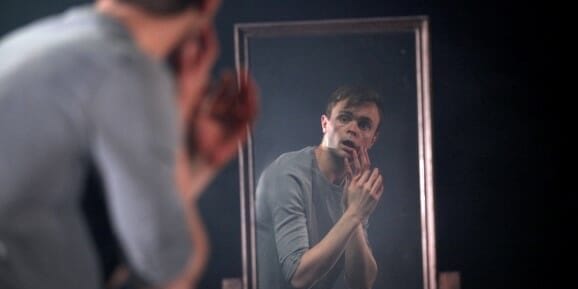 Frankenstein, adapted by Tristan Bernays and directed by Eleanor Rhode, finds an exciting new way of depicting the beloved tale. From the creation of The Creature and its abandonment, to the horror of Frankenstein realising what The Creature has become, a stripped back, yet artful production hits all the right notes.
Frankenstein, adapted by Tristan Bernays and directed by Eleanor Rhode, finds an exciting new way of depicting the beloved tale. From the creation of The Creature and its abandonment, to the horror of Frankenstein realising what The Creature has become, a stripped back, yet artful production hits all the right notes.
George Fletcher portrays The Creature, and later Frankenstein. In the opening scenes, the monster is brought jolting and cracking to life, then the childish mind begins to learn, tasting berries and fanning the flames of a fire. It’s an intensely physical performance, quite captivating to watch.
Fletcher moves, first like a child, then a canine, before finally taking on a primate-human hybrid form, body grotesquely twisted. No gory make-up or neck bolts are required here, just pure performance portrays the monstrous being.
He learns to speak, with some help from an audience member, which raises a few laughs in the otherwise appropriately dark production. As the creature meets his creator, Frankenstein, Fletcher slips easily between the two roles, changing speech pattern and mannerisms fluidly.
Fletcher is accompanied on stage by a chorus of one, with Rowena Lennon adding dialogue of minor characters as well as musical sound effects. The duo work well together and further evidence of Movement Director, Tom Jackson Greaves’s influence can be found.
Wilton’s Music Hall appears the ideal venue for the gothic tale, vast shadows hang eerily on the rear wall, making The Creature feel ten feet taller. Bare light bulbs cast harsher, more angular shadows across the performers faces and bodies.
A gothic monster story where spine-chilling scenes are borne out of performance and art, Frankenstein is a must for anyone looking for a different take on an old classic.





















